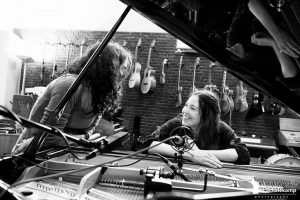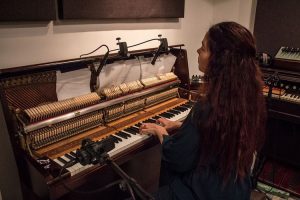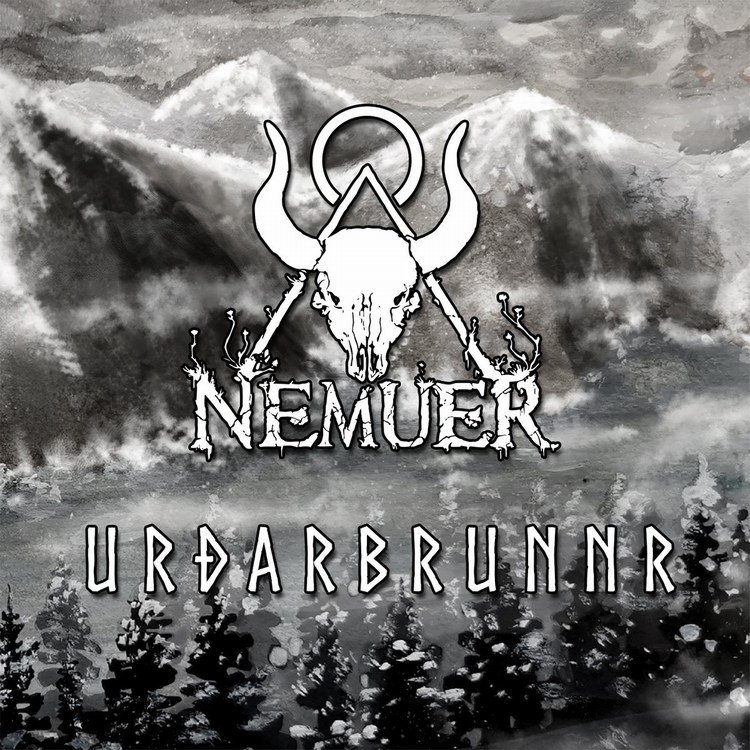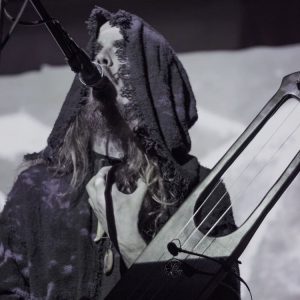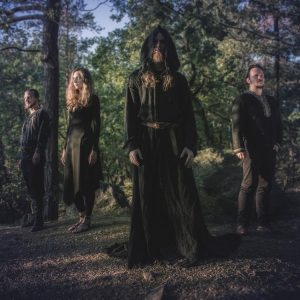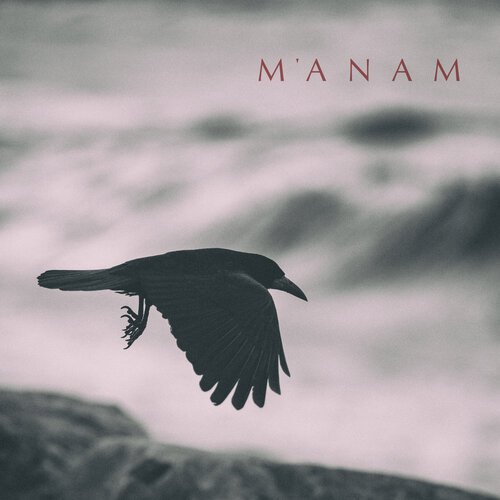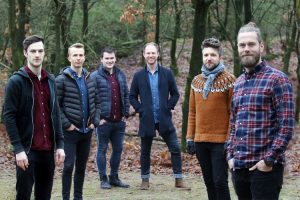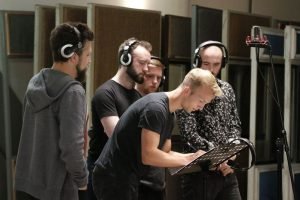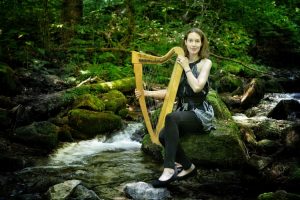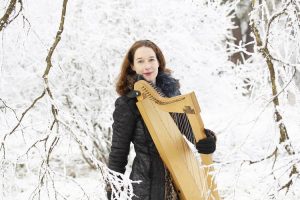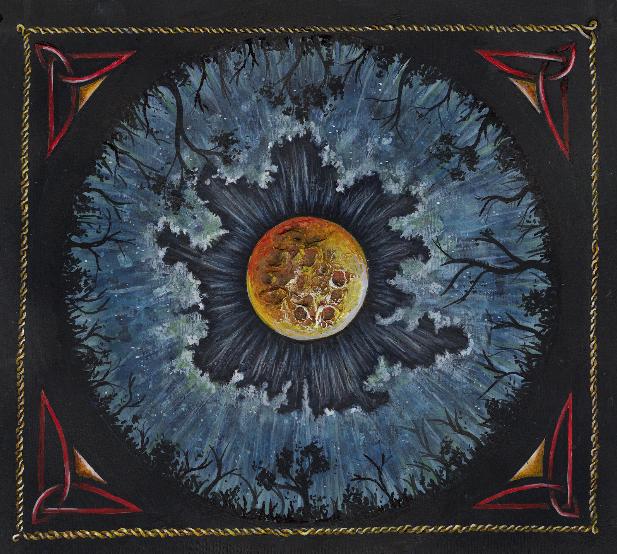
Can you put the feel of an early spring morning on a CD? If you are a talented musician like Philip Xander you can. With Prelude he has written and recorded the perfect soundtrack for a lovely sun-filled April morning drama movie. Prelude is filled with twelve instrumental songs that combine the magic of folk- and world music with touches of gypsy cheerfulness, prog-rock twists, and contemporary music quality. Philip felt no boundaries while writing the material for Prelude. No, on the contrary, he clearly used only one criterion: ‘if it sounds right, use it.’ and that makes Prelude a lovely album, that I highly recommend to any contemporary music lover.Philip Xander is a Dutch multi-instrumentalist who started his folk career as the guitarist of Omnia, and is now dividing his time between the gypsy-, chanson-, klezmer- and Balkan folk band Saffron Sun, in which he plays eastern/Arabic percussion and the Irish folk band Withershins in which he plays guitar and mandolin. Besides that, he often accompanies musicians like Gwendolyn Snowdon during their live shows
And now I hold his first solo album Prelude in front of me. A CD he recorded with the help of his friends: Anne Bakker (violin); Emelie Waldken (nyckelharpa); Anouk Platenkamp (harp); Judith Renkema (double bass); Otto de Jong (drums, tabla, and percussion); Erwin Tuijl (piano, keys, Rhodes, synths, harmonium, therevox) and of course Philip himself on guitar, mandolin, darbuka, and frame drum. Philip also composed and produced all the songs and Erwin Tuijl was responsible for the recording, mixing and producing of Prelude.
Philip playing New Heart, New World from his first solo album Prelude
The new album Prelude
Philip Xander isn’t the person to claim the spotlight, so Prelude is not an acoustic guitar solo extravaganza. No, it really is a collection of lovely songs with a real band feel to them, starting with the lovely song Drifting; a beautiful tender guitar melody that I could listen to for hours. Although it is only Philip on guitar playing this song, I would not call it a solo. It is a melody, a thought, a feeling put down to music. Seamlessly it flows over into Children of Chance. A fun, slightly jazzy cross between a gypsy folk song and a contemporary pop song with a piano melody that could have been written by Jyoti Verhoeff. This really IS spring in music form: lovely and funny with so many interesting melodies. The show is stolen, not by Philip, but by the beautiful violin of Anne Bakker. Gypsy style violin, distorted psychedelic sounds, gracious classical melodies, she does it all. What a lovely start to this CD.
After the slightly odd intermezzo of First Rites, Prelude continues with another beautiful instrumental ballad: Generations. ‘Tender’ is the word for this song. A tender piano melody to start it, tender guitar playing by Philip to continue it, and a tender transition of tempo halfway through the song representing the different generations -question mark- who knows. You make up your own mind. In the meantime just enjoy the musical experience.
 And that experience continues with a huge smile on my part when I hear the cheerful mandolin melody that starts the fifth song: Dawn. Philip and his friends have really managed to capture the feeling I get when I go out in the wild before sunrise. The feeling I have sitting somewhere along the water’s edge, waiting for the world to wake up.
And that experience continues with a huge smile on my part when I hear the cheerful mandolin melody that starts the fifth song: Dawn. Philip and his friends have really managed to capture the feeling I get when I go out in the wild before sunrise. The feeling I have sitting somewhere along the water’s edge, waiting for the world to wake up. As I said the power of Prelude is that it doesn’t sound like a solo escapade. Philip didn’t write twelve guitar solos. No, he wrote twelve real songs, sometimes dreamy, sometimes folky, sometimes just acoustic guitar songs, and sometimes all of those at once. As you can hear in Nadir – Zenith. The song starts off really dreamy, then picks up speed to become a nice acoustic guitar song only to speed up again and have the talented Emelie Waldken join in with her Nyckelharpa, making it a lovely contemporary dreamy folk song.
In the first section and most of the second section of Prelude– the record is divided into 3 sections of each four songs- the album is a lovely sweet instrumental CD, drifting between dreamy acoustic guitar melodies and enjoyable folk tunes. With Gallery of Faces Philip introduces a new tone. a wee bit harsher, a wee bit more psychedelic. As if the innocence of youth is gradually lost. As if something went wrong in this lovely musical dream world.
This tone is continued on the third and last section of Prelude. The song The Puzzlebox is played on a baritone guitar, making it sound lower, more ‘adult’ to me. On Enthaos we really start to hear Philips psychedelic side. Still subtle, still tender, but clearly shifting towards the style of Jyoti Verhoeff. It contains an odd, somewhat jazzy melody that seems to be played on a xylophone; and piano chords that -for a brief second- reminds me of a famous Billy Joel song and I’m loving it all. I am loving The Puzzlebox’s ‘weirdness’, its uniqueness. Philip’s subtle play with emotions within the music.
The psychedelic tones of Enthaos flow effortlessly into Children of Suffering. Again a song that breaches the gap between dream folk and Jyoti Verhoeff’s contemporary avant-garde style. Children of Suffering has a fuller, more poppy arrangement than the other songs on prelude. Partly because of the full hammond organ and other keyboard sounds, and partly because of the full string sound under it. Not to mention the grand prog-rock finale, full drums, keys, and strings, all coming together in a sudden stop. Philip did mention his solo album would be [quote]: “An instrumental art-folk concept album, blending various kinds of folk- and world music with contemporary influences and psychedelic undertones.” Well in Children of Suffering he brings all of this together
Coloured Smoke is the perfect, balanced ending to a wonderful debut CD. Highly recommended to those who love contemporary music in the style of Hans Elzinga or the Dutch band Flairck. There is a clear story flowing through the CD, but it is done so subtle that you can either choose to take the music as is, as lovely melodies to enjoy, or dive into the music and create your own story while listening. Either way Philip and his friends have created a beautiful album, that will make many, many more rounds in my CD player. I have absolutely no doubts about that.
– Cliff
Editor: Gwendolyn Snowdon
Sleeve art: Pernilla Kannapinn
Photo: Cliff de Booy


